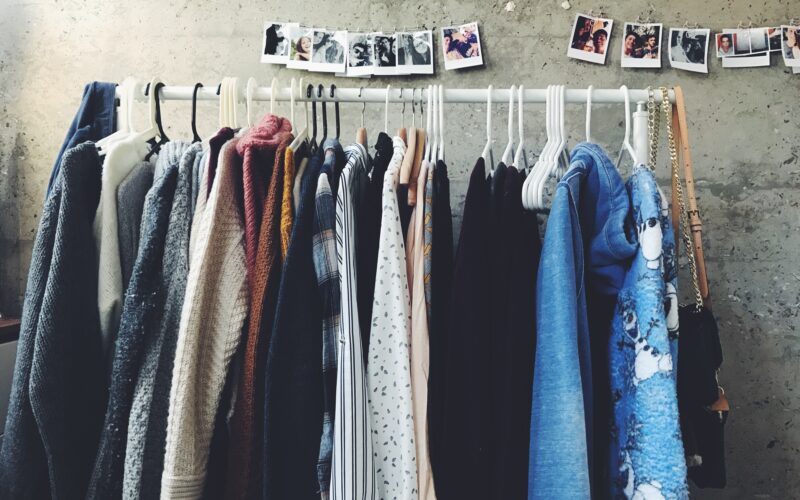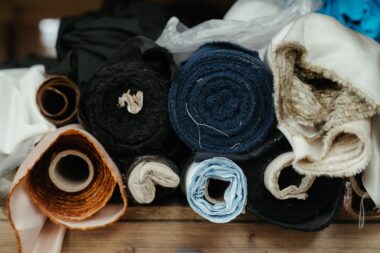I love to thrift. I’ve always loved thrifting and when I’m decluttering I either give my things to people I know, or I donate to a charity shop, or thrift store/shop, as they’re called on this side of the pond. The thought of just chucking clothes in the bin to end up in a landfill doesn’t sit right, and considering we have an abundance of places we can donate to, it probably doesn’t sit right with a bunch of other people either. But, I’ve heard some murmurs on the internet that all this good that we think we’re doing by donating isn’t actually that good after all. I’ve heard a chunk of our donated items end up in landfills or shipped abroad. So it got me thinking, what actually happens to donated clothes?
What happens once you donate?
According to a 2006 ABC report, in the United States, only 10 percent of clothing donations are kept and sold in thrift stores locally. What happens to donated clothes after that is pretty depressing. The remaining 90 percent are sold to textile recycling companies. The majority of textiles (about 70 percent) are recycled into cleaning cloths and other industrial items. But the remaining 20-30 percent are shipped off to be sold in Africa and other developing nations. Here in Canada, according to a 2018 CBC report, only about half of what gets donated ends up in a thrift shop, with about half of that actually selling. Value Village only sells about a quarter of it’s donations and the Salvation Army only keeps clothing on it’s racks for four weeks before switching it out.
Where are clothes sent?
In 2017, Canada exported $173 million of used clothing globally. The three largest importers were Kenya ($20 million), Ghana ($14 million) and India ($12 million). According to Kate Bahen of Charity Intelligence, exporting such large volumes of used clothing to developing countries ends up having a negative impact on those countries by suppressing their textile industries and dumping our waste into their landfills. In 2016, the East African Community (EAC) proposed an import ban on used clothing. Imported used clothing sells for less than locally produced clothing, eroding local industry. The goal of the ban was to reduce foreign competition, encourage local textile production and help rejuvenate a once thriving industry.
In addition to damaging local industry, there’s also the matter of the end of life of the garment. Whether clothes are resold initially or not, they eventually end up in a landfill and it’s not a landfill in Canada. Current textile recycling methods turn less than 1% of non-reusable materials back into new textiles. We haven’t developed a mass market, sustainable end-to-end model for clothing anywhere in the world yet let alone expecting a developing country to have access to the technology to do it. So at the end of the day, we’re sending our trash abroad.
What can we do instead?
The average Canadian gets rid of 37 kilograms of textiles per year with 85% of wearable textiles and 99% of non-wearable ones, such as shoes and towels ending up in a landfill. Is this a case to not donate just because of what happens to donated clothes? I don’t think so. Is this a case for people buying less stuff, reusing what you can and recycling if possible? Of course. The average Canadian now buys 72 textiles items a year, a 60 percent increase from 20 years ago, but keeps them for half the time.
But are we solely to blame here for what happens to donated clothes? Absolutely not. In my opinion, every large manufacturer and seller of pretty much anything should have the responsibility to ensure their product has a plan for end of life. Just selling it and leaving it at that shouldn’t be ok. Knowing that the end of life for a product is a landfill shouldn’t be the accepted practice.
Some innovative companies have started looking at full life cycles and creating circular systems, as opposed to the vertical supply chain of today. UK company, Worn Again Technologies aims to capture materials from non-reusable products (textiles and PET bottles) at the end of their life and convert them back into raw materials to form a circular system. Worn Again worked with McDonalds in the UK before the 2012 Olympics to create a closed loop system for their employee uniforms. A 100% recycled uniform was designed for their 85,000 restaurant staff.
Seattle-based Evrnu, another company invested in the circular textile economy, regenerates fibres from discarded clothing to create new textiles. In 2019, Evmu partnered with Stella McCartney and Adidas to create a limited run of the adidas by Stella McCartney Infinite Hoodie. The hoodie was the first item to be “made to be remade” composed of 60% NuCycl™ and 40% organic cotton that was diverted from landfills and will be returned to the NuCycl system at the end of life.
But with circular textile technology still in its infancy and still being too cost prohibitive for the mass market, is there much a single individual can do right now? We live in a capitalist, consumerism-focused, disposable society, so I’ll admit it’s not looking great and probably isn’t going to be easy.
- Start small, try not to buy disposable things.
- If you’re done with something, give it to a friend or donate it rather than throwing it out.
- If you’re buying something, try to buy second-hand.
- If you want to, or need to buy something new, and are in a position to, try and buy quality items that will last you a long time or are repairable if they break.
- Buying from companies that are focusing on sustainable, circular methods of production can also be helpful. Proving a market for this will help investment in new technology and a reduction in the cost to customers over time.
- And finally, try not to let the weight of the fact that we’ve destroyed the planet and screwed the people get you down too much. Note to reader: if you know how to do that please give me tips. Struggling.
This article was first published on January 10, 2021 on Destinationtbc.com, titled “Where do the clothes we donate go?“
Sustayn is designed to present the most useful recommendations for environmentally friendly approaches and items. We update links when possible, but note that links can be broken and subject to change.






